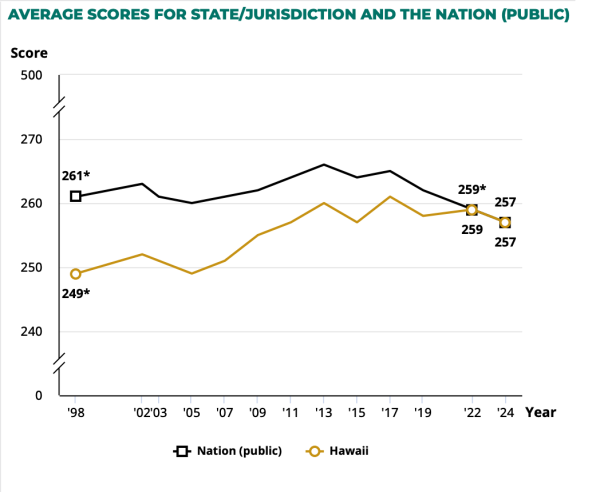Students, teachers adjust to new school schedule
Students handling sales at the first Easter Seals fundraiser of the school year. Clubs were able to ease some restrictions after their third year of being affected by COVID-19.
Staff Writers
By Kayla Tom and Mehana Watanabe
During the current and first full year of in-person learning after being online, Mid-Pacific made adjustments to their school schedule.
“The schedule could use some work. I don’t like starting early in the morning since there’s a lot of traffic in the morning, and it takes a while to get to school, but I do like ending earlier,” said senior Kennedy Hara.
Since school begins earlier, the end time is now at 2:25 p.m every day compared to the previous years when school ended at 3:10 p.m. on odd days, and 2:25 p.m. on even days.
Others appreciated the earlier start since the ending time is sooner as well. Students and teachers ending at 2:25 p.m. allows students to have enough time for extracurricular activities, such as practices or games.
“I really like the start time and end time because after school it gives me time to get to my extracurricular activities. Last year when school ended at 3:10 p.m. I felt rushed,” said sophomore Ava Lee.
For others, having an earlier end time results in student athletes missing less school time, as leaving early can be an inconvenience.
“One of the key constraints is sports because when athletes leave early they fall behind, so starting school earlier is a bright spot. Starting earlier is preferred, even though we may lose a little bit of efficiency in the morning because our brains aren’t awake for high school,” said math teacher Raymond LaFleur, c/o 2004.
With the schedule change, homeroom was added to the daily schedule.
In previous years, homeroom was only on odd days during the mornings, and office hours would take place before and after school. In addition, office hours are now on B and C days during homeroom. At this time seniors with a minimum GPA of 2.5 have the option to leave campus. Office hours are also on A days, after school from 2:30-3:15 p.m.
“I don’t understand why we have homeroom every day even though we don’t have office hours every day. I think we should have office hours in the morning or after school so that everyone doesn’t have to stay for office hours, if you don’t need it,” said Hara.
Others feel that having a homeroom every day is a good asset to get closer to their homeroom class.
“This year I do think there’s an aspect of a homeroom community. That’s been nice. Last year and in previous years we only saw our homeroom a couple of days a week. I didn’t know my homeroom that well, but now every day you can know people’s personalities more and you can talk to them more, it’s a nice feature,” said senior Julian Ibarra.
The passing time this year is only five minutes instead of ten minutes from previous years. However, some teachers excuse students five minutes earlier, to give them a ten minutes passing time.
“Some teachers don’t let students out earlier, and from far distances, it can be difficult to get to the next class in time. Back in my day our passing time was seven minutes, and I think that seven minutes is the perfect passing time, not too long, and not too short,” said LaFleur.
Students and faculty also have hesitations about the new lunch schedule. Before, students were offered 45 minutes to buy and eat lunch, and there were two different lunches for high school.
“It’s simpler as far as the first and second lunch thing, that’s good,” said Ibarra.
Students now receive ten minutes less to get their lunch and eat.
“Although I take home lunch every day, I think that lunch should be longer. I think we should extend our lunch time to at least 15 minutes more,” said Lee.
As of the beginning of October, students were assigned to sit in their designated area where each grade eats together.
LaFleur recognizes that the administration can’t please everyone.
“No schedule will ever be perfect. There are some things I agree and disagree on, although not everyone may feel the same way. Scheduling is a very high complexity and challenging problem. It is very hard to manage all the expectations,” said LaFleur.






